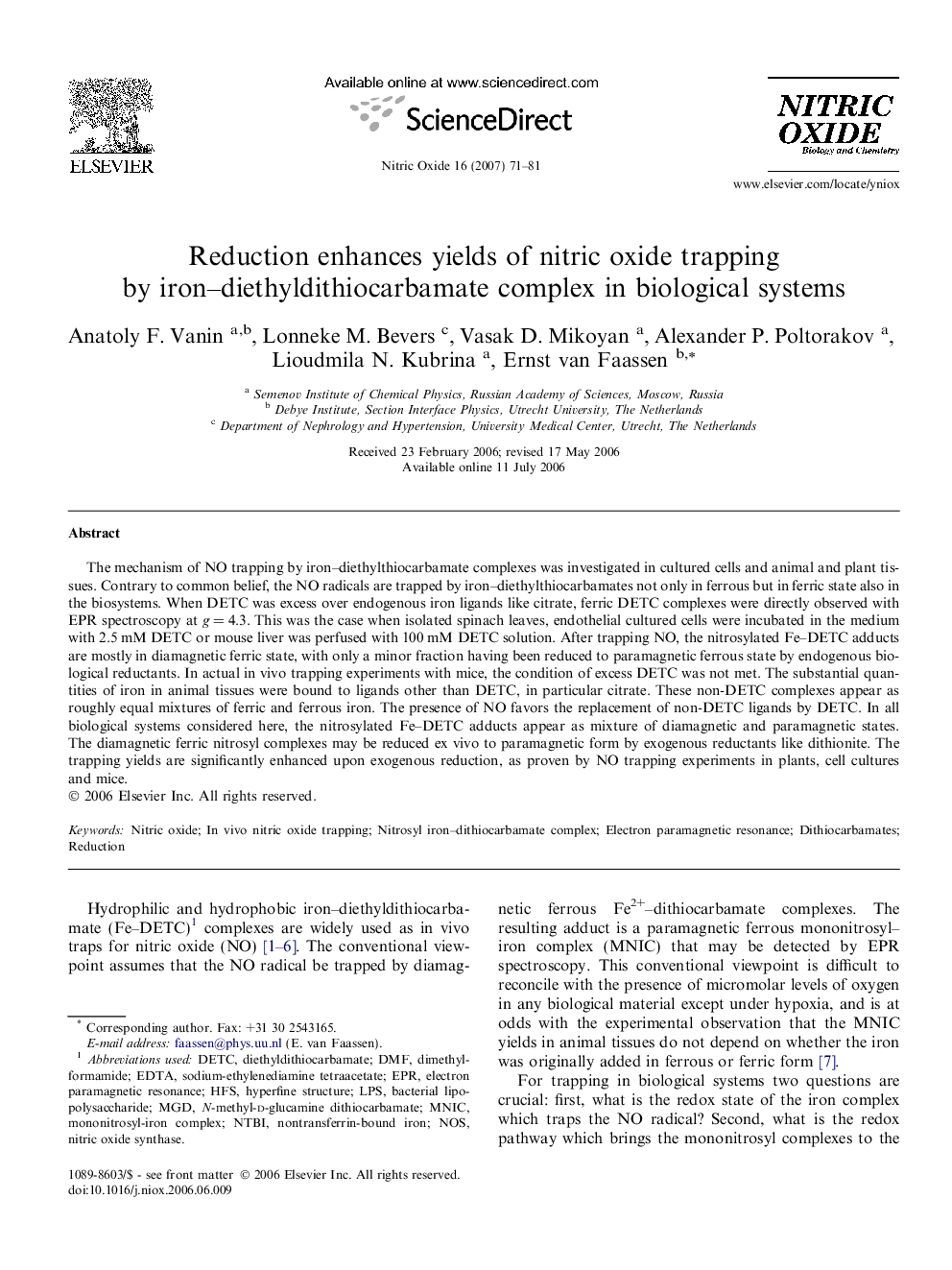| Article ID | Journal | Published Year | Pages | File Type |
|---|---|---|---|---|
| 2002093 | Nitric Oxide | 2007 | 11 Pages |
The mechanism of NO trapping by iron–diethylthiocarbamate complexes was investigated in cultured cells and animal and plant tissues. Contrary to common belief, the NO radicals are trapped by iron–diethylthiocarbamates not only in ferrous but in ferric state also in the biosystems. When DETC was excess over endogenous iron ligands like citrate, ferric DETC complexes were directly observed with EPR spectroscopy at g = 4.3. This was the case when isolated spinach leaves, endothelial cultured cells were incubated in the medium with 2.5 mM DETC or mouse liver was perfused with 100 mM DETC solution. After trapping NO, the nitrosylated Fe–DETC adducts are mostly in diamagnetic ferric state, with only a minor fraction having been reduced to paramagnetic ferrous state by endogenous biological reductants. In actual in vivo trapping experiments with mice, the condition of excess DETC was not met. The substantial quantities of iron in animal tissues were bound to ligands other than DETC, in particular citrate. These non-DETC complexes appear as roughly equal mixtures of ferric and ferrous iron. The presence of NO favors the replacement of non-DETC ligands by DETC. In all biological systems considered here, the nitrosylated Fe–DETC adducts appear as mixture of diamagnetic and paramagnetic states. The diamagnetic ferric nitrosyl complexes may be reduced ex vivo to paramagnetic form by exogenous reductants like dithionite. The trapping yields are significantly enhanced upon exogenous reduction, as proven by NO trapping experiments in plants, cell cultures and mice.
